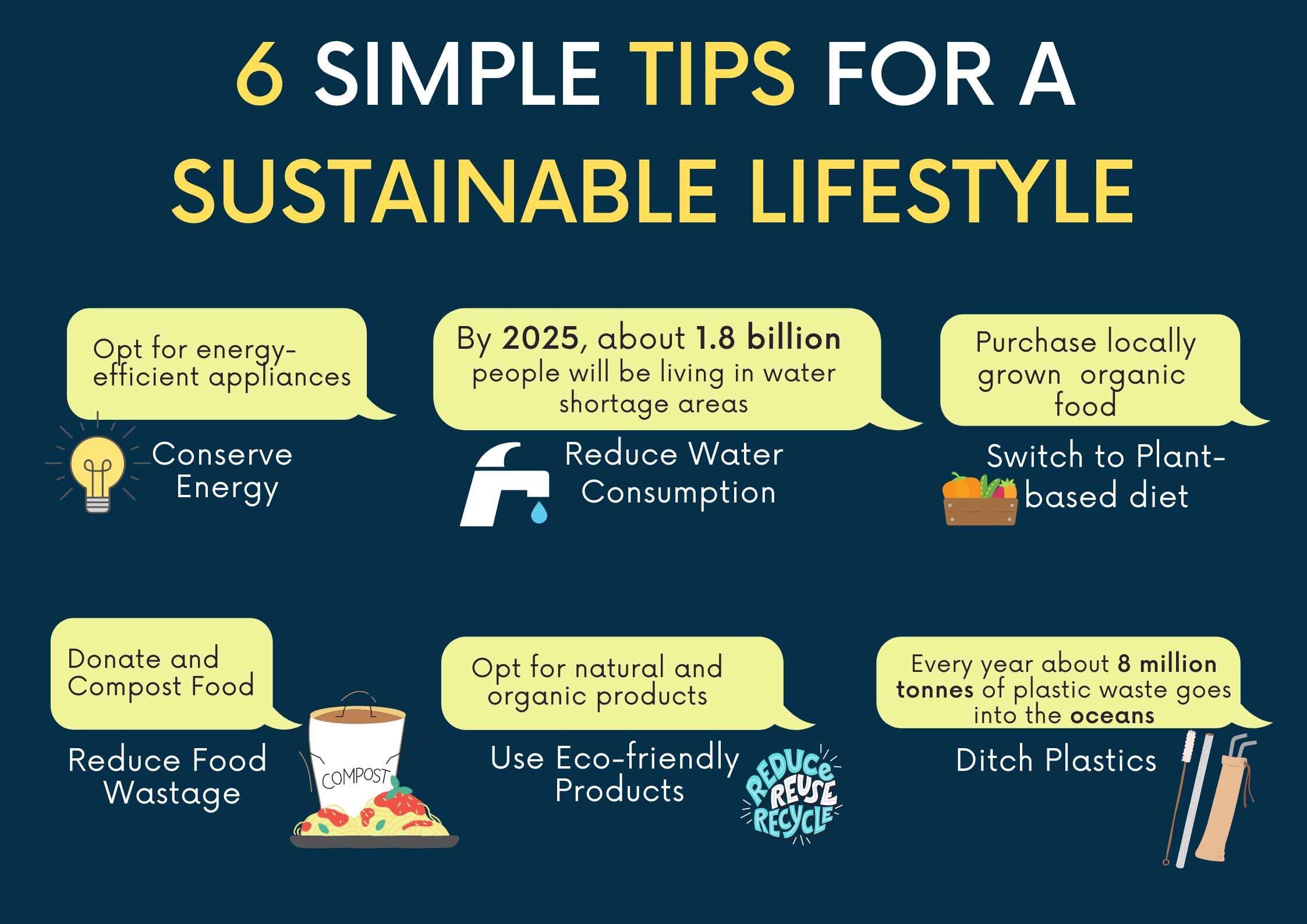6 Simple Tips for a Sustainable Lifestyle
The growing population is leading to an increase in waste production, which is not only harming the environment at present but will also affect the generations to come. It is time we start thinking of our choices and shift to sustainable living practices to conserve the earth’s natural resources. There are some simple ways you can start off with and a step-by-step approach to minimize your environmental footprint. To make your sustainable journey easy, here are few tips you can follow to go green.
1. Conserve Energy
Minimizing your energy consumption can reduce your carbon footprint. Make use of natural light and turn off lights and appliances when not needed. Remember when your mom would ask if you were ‘born in a barn’? Close those doors behind you so you aren’t allowing cold or hot air in when you are in a temperature-controlled environment. Opt for energy-saving appliances and light bulbs. Check out your local power provider’s website for additional ideas on conserving energy. Some have energy-saving programs that will save you big bucks and help ensure there is enough energy to go around. Not only will you decrease your environmental footprint but you will save money.
2. Reduce Your Water Consumption
According to the Food and Agriculture Organization of the United Nations (FAO), by the time we reach 2025 about 1.8 billion people will be living in areas with water shortages. So, in order to tackle this issue, you must reduce your water consumption. To do so, switch to water-saving products and turn the water tap off when not needed especially while taking shower or hand washing. While waiting for your water to heat up you can fill containers for watering plants or cooking to reduce waste.
3. Go for a Plant-Based Diet or Not
One way to go green is switching to a plant-based diet from a meat-based diet as meat production takes a lot of natural resources and is responsible for excessive carbon emissions as compared to a vegan diet. Thus, in order to minimize your carbon footprint try to purchase locally grown organic food and help protect the environment. For meat-lovers, check out websites like CrowdCow or support your local farmers market for fresh locally raised meat. Many of these small farms have a new way of farming where they produce excellent food while being great stewards of the land.
4. Minimize Your Food Waste
Another sustainable practice could be composting the wasted food that could otherwise go into your garbage and eventually end up in landfills causing methane emissions that are responsible for global warming. Many cities are now offering composting services where food scraps and yard waste is being composted and given back to the community at no cost. According to the Environmental Defence Fund (EDF), methane is eighty-four times more harmful than carbon dioxide, in the initial twenty years of its release. Therefore, it is essential to cut food wastage in order to prevent climate change.
5. Use Eco-Friendly Products
Another simple way to contribute to environmental sustainability is switching to eco-friendly cleaning and beauty products. These products have harmful chemicals that have adverse effects on the environment. Thus, using organic and less toxic products help you keep the environment safe and healthy. Opt for reusable paper towels, natural body products, organic moth repellents, stainless steel drinking straws, and for waste-free laundry, you can try soap nuts. Moreover, you can use white vinegar, lemon, and baking soda for cleaning purposes instead of toxic cleaners.
6. Cut Out Plastic Waste
Mostly, the plastic waste you throw in your trash ends up in oceans causing harm to marine life. Every year about 8 million tonnes of plastic waste goes into the oceans. About 100,000 marine animals such as whales and sea lions die because of consuming plastic waste or getting entangled. Thus, in order to protect marine life, you should start switching to sustainable options. Buy reusable bags, coffee cups, straws, and kitchen utensils instead of single-use plastic products as they are durable and can be used for a longer period of time. Moreover, avoid the use of bottled water and small package products to reduce plastic waste.
We need to realize that our un-eco-friendly choices are posing a continuous threat to the environment including pollution and climate change. Hence, switching to sustainable practices such as water, food, and plastic waste reduction, energy conservation, and opting for sustainable products will help mitigate these harmful impacts and lead us to a sustainable future.

